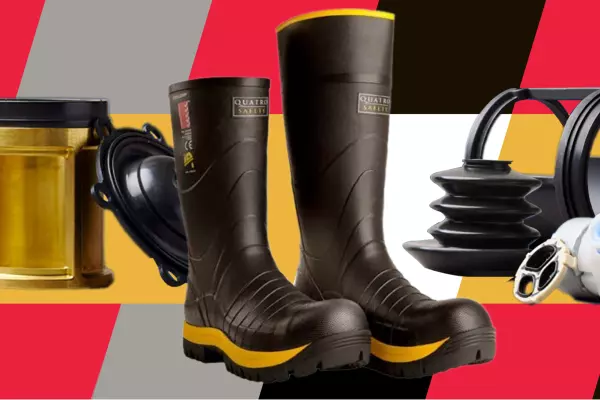BusinessDesk investments editor Frances Cook responds to emails from readers each week to answer questions about money. Below, you will find her expert advice. Send your own questions to [email protected].
Hi there, I'm a long-time follower and love hearing what you have to say.
I was wondering if you have any advice for writing a standout cover letter and CV?
Any help would be great.
A
Hi, A,
The trick with a curriculum vitae and cover letter is that their actual format should be short, snappy and somewhat boring. The standout part should be the content – you and what makes you such a good fit for the job.
A template can be a good place to start with a CV and cover letter.
Big job websites such as Seek and TradeMe Jobs have some great ones. If you're starting from scratch, I'd head there first.
The CV
Let’s start with the CV. If you’re early in your career, it might be one to two pages long. If you’ve got more experience, maybe three pages. I wouldn't go over that.
At the stage where someone is looking at your CV, they’re short-listing, and you want to avoid making their eyes glaze over as they shuffle through the pile.
While they’re sorting through that pile, many hiring managers will first rely on a computer algorithm to help them cull CVs. It kind of sucks, but it’s the reality these days.
So tweak your CV (and cover letter) to include key words from the job ad. If they’ve asked for a specific licence type or years of experience in X role, for example, include that in your CV using the exact wording used in the ad.
We all have to pay homage to our computer overlords these days.
When you’re listing skills and experience, bullet points are your friend. Remember: short, sweet, skimmable.
Where possible, give concrete examples of success. As in: “I spent three years leading the customer service team, during which time customer satisfaction increased from 63% to 74%."
The cover letter
When it comes to your cover letter, that’s the time to give them the razzle-dazzle and let your personality shine. While your CV is to show your skills, experience and achievements, the cover letter is how you introduce yourself professionally.
Again, though, we want to keep it to the point. One page only.
In that page, we’re giving a bit of personality, telling them why you want the role and going into more depth on your most relevant experience.
How much personality is too much personality? Well, here’s where our computer overlords can help us a little.
Check out the company’s social media profiles, and maybe even the social media pages of people like the chief executive. What’s the tone? That can give you a steer on where to pitch your cover letter.
You can also give more concrete examples of your best successes in previous roles, how you achieved them and how you can bring that experience to this new role.
For instance, in the previous customer service example, you might detail exactly how you achieved the increase in customer-satisfaction results and what you learnt from that success that you think would be applicable to the new role.
Next level
But the biggest tip I’ve got? Don’t just rely on your CV and cover letter.
They’re crucial tools for getting your foot in the door, but the biggest lever you’ll ever have is making a human connection.
If you know someone who works at the company, talk to them before applying and ask them if they’ll recommend you for the role.
If you don’t know anyone, look the company up on LinkedIn to see if you can find an employee in a similar role to the one you’re applying for. Send them a message asking for a quick phone call or a chat over coffee.
Companies often give a finder's fee to existing employees if they recommend someone for a role and that person gets hired, so you might find people very willing to meet up and chat. It’s worth a try.
I also asked some industry experts on their tips for you and they have some gems. Check them out below.
Rob Clark, Country Manager, Seek NZ
"While crafting a stellar CV and cover letter is not an exact science, there are several simple ways to make sure your application is well received by potential employers.
Ensuring your application is short and sharp is a great first step, as we know over half of employers are frustrated by applications that are too long or filled with irrelevant information.
Standing out from the crowd is key, which can be a challenge at the beginning of your career or if you are changing industries and have less relevant experience.
To showcase that you’re a great fit for the role, include past experience and qualifications and highlight transferable skills that could be applicable.
Remember, you may not tick all the boxes in the job description, but employers are always on the hunt for good talent and will recognise adaptability and a willingness to learn.
Adapt your application to include language and key tasks from the job ad while avoiding images, graphs and lofty acronyms. This will help ensure your CV is flagged by companies that are using HR software and applicant tracking systems, especially if you're applying for a role at a large organisation.
We also know that three-quarters of hirers value reference checks and four in five will request at least one or two references, so it’s best to begin lining up trusted colleagues when you start applying for a new role."
Simon Rooney, Find Recruitment
"Do personalise a cover letter, but also make reference to the role and the company. Give a reason why you want that role, why you want to work for that particular company and what you could bring along.
Keep it to two to three paragraphs and ideally have it addressed to the person whose name is on the advert, if it is there, rather than 'To whom it may concern'.
For your CV, start with your name and address, then give thought to a short summary explaining your skill set and identifying a couple of key achievements. Follow that with your qualifications rather than burying them at the end of the CV.
List the different systems you may have used – this can give reassurance to the company that you already have knowledge of the systems they use. Put in any additional courses you have completed as this demonstrates initiative and drive.
Have your most recent role at the top of your CV and work down from there. Give thought to what you do, have a look at previous appraisals you may have had to jog the memory, then show off. We tend to not grab the limelight, but this is the time to shine.
What did you do that was over and above your day-to-day responsibilities? List the projects you were involved in, initiatives you led, people you mentored and the outcomes.
Repeat this for your last two to three roles, demonstrating how you have grown and developed your career.
Keep it concise and avoid multiple fonts and colours – they can be a distraction.
You’ll be judged on your attention to detail, so double-check for spelling mistakes and bad grammar. Get someone to check through your CV before sending it anywhere. Make sure dates on your employment line up. If there is a gap, explain why.
Avoid cutting and pasting your job description because this shows laziness, instead use it as a guide and personalise it.
Should you put in hobbies or interests? Overall, the answer to this is yes. It can build rapport and shows what you have achieved or been involved in outside of work, giving an idea of your character.
Involved in an non-governmental organisation or a charity? Put that in – you’ve done some good for your community.
Lastly, follow up to where you have applied, highlight your skill set and why you would be good for the role.
It can put you top of the pile, showing initiative and drive to get the role you really want."
Send questions to [email protected] if you want to be featured in the column. Emails should be about 200 words, and we won't publish your name. Unfortunately, Frances is not able to respond to every email received, or offer individual financial advice.
Information in this column is general in nature and should not be taken as individual financial advice. Frances Cook and BusinessDesk are not responsible for any loss a reader may suffer.














